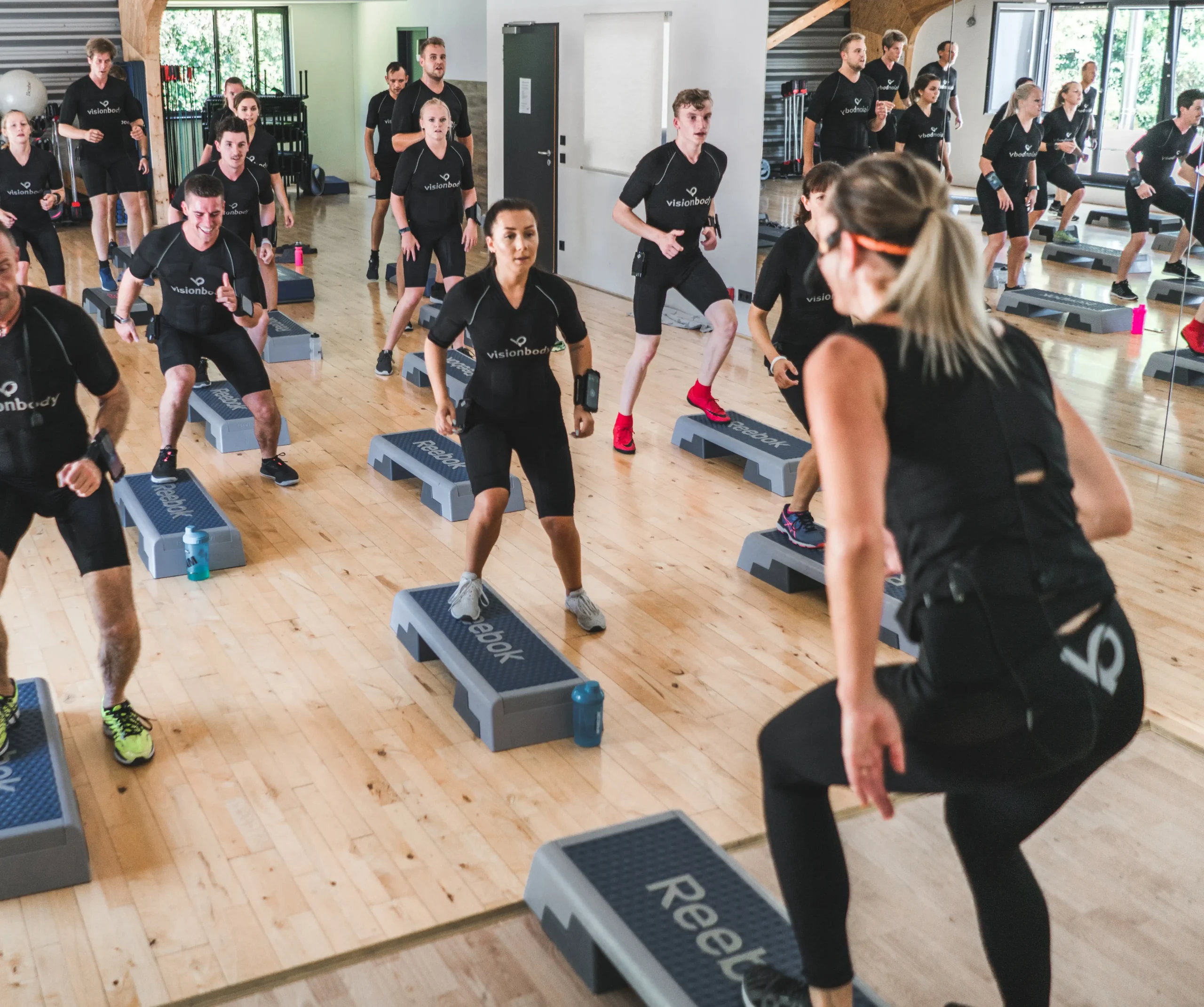Discover the Jenner Sisters Workout Shortcut!
Kendall Jenner, 27, and her sister Kylie, 25, connected in this week’s episode of The Kardashians as they learned about this workout technique called Whole Body EMS.
During the video, trainer Bridget Whitman defined “Electro Muscle Stimulation” as the use of a bodysuit to stimulate and contract muscles. Kendall and Kylie wore the EMS Training suits for the workout and kept their arms and legs bent to engage the muscles while the machine administered the stimuli. Furthermore, they disclosed that they spend a significant amount of time in the gym every day to keep their bodies toned; but, with this new method of training, they would cut that time in half.
In the field of fitness and strength training, ongoing innovation is required to continue pushing the limits of what the human body is capable of. Electrical Muscle Stimulation (EMS) Training is one such groundbreaking technology that has grown in popularity in recent years. EMS Training employs the use of electrical impulses to contract and stimulate muscles, resulting in a more efficient and effective workout. In this article, we will look at what EMS Training is, how it works, the benefits it provides, and some things to think about if you want to attempt this cutting-edge fitness method.
What exactly is EMS Muscle training?
Electrical muscular Stimulation (EMS) Training is an exercise technique that stimulates muscular contractions with low-frequency electrical impulses. It began in the medical industry as a way to help patients with injuries or mobility impairments rebuild their muscles. Over time, fitness professionals recognized its potential as a full-body workout and included it in athletes’ and fitness enthusiasts’ training programs.
What is the procedure for EMS Training?
A specialized EMS device is utilized during an EMS Training session to send electrical impulses through electrodes placed on specific muscle groups. During typical workouts, these impulses mirror the electrical signals sent by the central nervous system to generate muscle contractions. Depending on the focus of the workout, the electrodes can be attached to various regions of the body, such as the arms, legs, abdominal area, and back.
A trainer or doctor often controls the EMS equipment, adjusting the intensity and frequency of the electrical impulses based on individual fitness levels and goals. The program itself combines standard movements like squats, lunges, and push-ups with EMS stimulation. This combination produces a more intense and efficient workout that engages a greater percentage of muscle fibers than traditional training alone.
The Advantages of EMS Training
- EMS’s Time Efficiency Training sessions are typically 20 to 30 minutes long, as opposed to standard workouts. Individuals with hectic schedules would appreciate the time-saving component.
- EMS Simulation Training engages many muscle groups at the same time, offering a thorough full-body training experience in a single session.
- Muscle Strength and Endurance: The powerful muscle contractions that occur during EMS Training enhance muscle strength and endurance, allowing individuals to accomplish their fitness goals more quickly.
- Low Impact: Because EMS training is light on the joints, it is appropriate for people who have joint problems or are recovering from injuries.
- Enhanced Posture and Core Strength: Deep muscles, especially those responsible for core stability and posture, are targeted by electrical stimulation, resulting in enhanced alignment and total core strength.
- EMS has been demonstrated to enhance blood flow, aid in muscle rehabilitation, and reduce post-workout pain.
- Personalized Training: Certified trainers can tailor EMS programs to specific fitness levels, ensuring that everyone gets a safe and effective workout.
EMS Training Considerations
- Qualified Trainers: It is critical to participate in EMS Training under the supervision of qualified trainers who understand how to adjust the workout to individual needs.
- Individuals with pre-existing medical concerns, such as epilepsy, heart difficulties, or pregnancy, should contact their healthcare professional before doing EMS Training.
- Hydration is critical before and after EMS training since increased muscular activity can contribute to dehydration.
- While EMS Training can give a tough workout, it is best to combine it with traditional exercise for a well-rounded fitness regimen.
Pre-EMS Training Do’s and Don’ts
- Hydrate at least 20-30 minutes before your training.
- Sleep for at least 6-8 hours the previous night.
- Have a proper meal before your session.
- Avoid using any skin or body lotion before training.
- Do not consume alcohol 12 hours prior to your session.
Try it Yourself!
EMS Training has emerged as a game-changer in the fitness sector, providing a time-efficient and effective method of increasing muscle strength and general fitness. EMS Training has attracted the interest of fitness lovers worldwide due to its ability to engage numerous muscle groups simultaneously and target deep muscles that are typically difficult to activate through standard training.
As with any workout program, safety and good coaching are essential. Seeking the expertise of experienced trainers and understanding individual fitness needs will ensure a happy and successful path toward better strength and general wellness for individuals looking to push their workout regimen to new heights and experience the benefits of EMS Training.
To find out more about this cutting-edge technology that saves time and balances your workout routine, visit The Wellness Co. Book Your Appointment Now!




